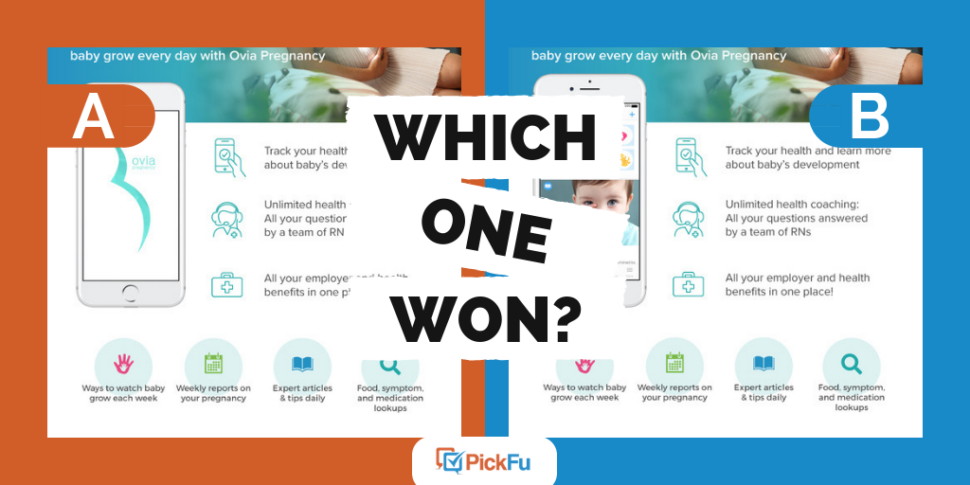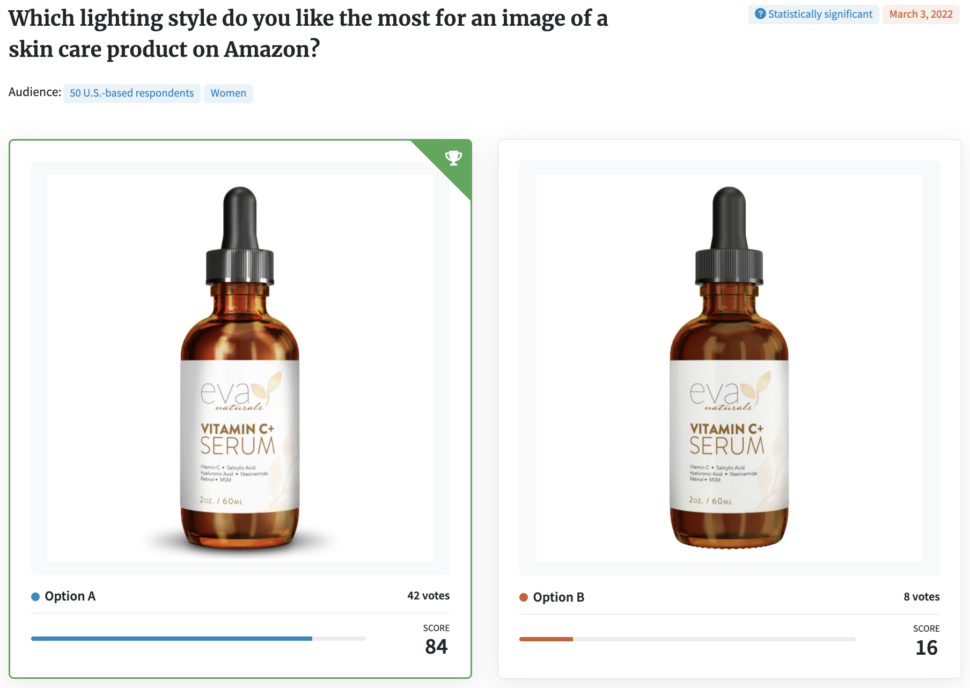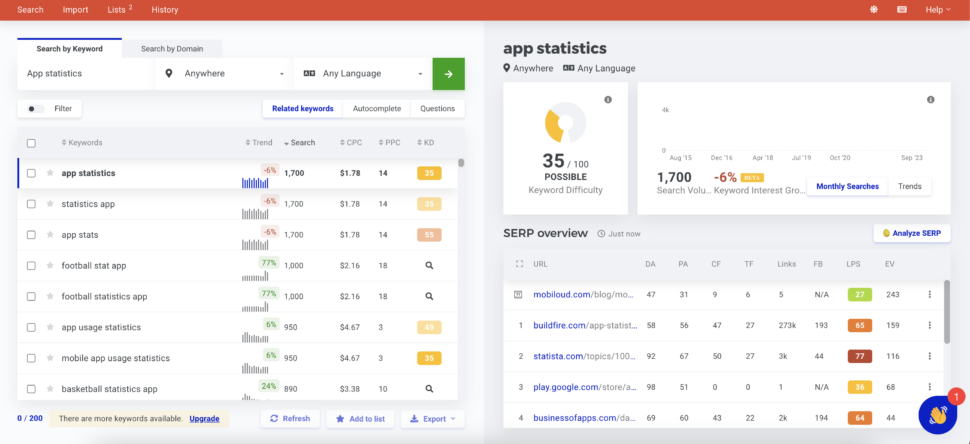One key factor decides if your mobile app is a flop or a hit: market research.
However, many entrepreneurs and app developers find mobile app market research expensive, complex, and time-consuming.
Not to worry – at PickFu, we have years of experience helping gaming and mobile app developers do research quickly and efficiently. Our customers can see an almost overnight change in downloads, purchases, and engagement after they apply their findings.
This is our guide on how to do market research in order to reduce app churn and ensure your product thrives. Whether you’re building your app for Android or the App Store, you’ll unlock all the information you need right here. Let’s dive in!
What is mobile app market research?
Market research for mobile apps is the process of gathering and analyzing information about your target audience, trends in your marketplace, legal and regulatory issues, and other factors. It includes competitor analysis and uses research methods to collect primary and secondary data.
Primary research is when you gather data yourself, directly from focus groups, interviews, surveys, and other activities. Secondary research is when you analyze existing sources of information, such as customer reviews and industry reports.
Such information supports your business plan and empowers you to create features that customers love. You’ll have the best chance of making your app a success while reducing risk and complying with legal issues.
Why is mobile app market research necessary?
The reality is that most apps struggle to survive. It isn’t enough to simply have a mobile app idea to launch a successful app business.
There’s intense competition on Google Play and the App Store marketplaces, and it’s easy to frustrate customers by building something they don’t like.
But when you conduct market research, you help ensure your app launch is successful by learning key information, including:
- Who your target audience is. Are they millennial gamers, busy moms, or another specific user base?
- Who your competitors are and what they do. By learning about their features, marketing strategies, and even gaps in their offering, you’ll make your app a better alternative.
- Ideas for a game-changing USP (Unique Selling Proposition).
- Estimates for your potential earnings and growth by setting up metrics.
- The latest trends and challenges in your industry.
- Information about risks and pitfalls.
- Whether your app idea is feasible and has the potential to succeed.
Research leads to better decision-making, saving you time and money along the way. Now let’s look at how to carry out the actual research.
How to do market research for your mobile app
Doing mobile app market research starts with gathering foundational information about your audience and the app marketplace.
Next, you collect raw data from real people and third-party data through online sources.
Below, we’ll also walk through our easy and effective research solution to streamline your app ideation and design. Let’s get started.
1. Define your target audience

Learning more about your target audience leads to better customer retention, more effective marketing strategies, and higher earnings. Shape your business model and mobile app development by gathering relevant data about your user base.
Here are some important details to collect:
- Audience demographics: age, interests, location, mobile app usage, and more.
- Audience preferences and habits: when and how often do they use apps similar to yours? What features do they appreciate or dislike in those apps?
- Audience challenges and pain points: what problems are they trying to solve by using apps like yours? Can you offer a better solution?
This data will inform everything from your mobile app design to your app marketing strategies. You’ll collect this information using secondary or desk research methods we’ll cover soon.
2. Do competitor analysis

Learning about your competition is a key part of market research.
You need to check if your new app idea exists and what your competition looks like. The last thing you want to do is invest money, time, and effort to produce an app that offers nothing new or unique.
Here’s what competitive analysis will do for you:
- Validate your app idea by verifying if it’s unique or an improvement on what’s out there
- Understand your competitors’ marketing strategies and replicate or improve upon them
- Find customer pain points that your competition fails to address
- Identify important features that your competition doesn’t offer
- Help you choose a competitive price for your in-app purchasing options
Let’s say you’re in the mindfulness space. A quick search on either the Google Play Store or the App Store will show you that it’s a popular and crowded market. You can then download a few apps and decide if you can build something better, less expensive, or step into a new niche entirely.
This competitor analysis will help your startup gain clarity in direction and reach more potential customers by applying what you learn.
3. Create a SWOT analysis

A SWOT analysis is an important part of any research strategy. This is where you organize details about your app into:
- Strengths: your app/business strengths. For example, if your app is about personal finance, a strength could be that it offers AI insights when other apps don’t.
- Weaknesses: problems and gaps in your business that potentially work against you. A personal finance app’s weakness could be that its brand name isn’t strong enough to compete with established apps.
- Opportunities: these are possibilities outside your business that allow you to grow. For example, a major competing personal finance app changes its name and look. Customers are confused and ready to try your app instead.
- Threats: these are issues that you can’t control, such as a country banning finance apps that don’t meet its regulations.
Creating a SWOT matrix will give you a high-level overview of your app’s position in the market. Refer to this whenever you feel uncertain about your mobile application roadmap.
4. Run polls with PickFu

It’s time for action. This is where you carry out primary research and talk to real people to validate your app idea, boost usability, and even do app store optimization.
And a fast, effective way to collect data for mobile app development is by using polls.
At PickFu, we help app development companies shape their designs, functionalities, and more by gathering feedback through targeted polls.
Here’s how you can use our platform to collect information from your target audience:
- Validate your app idea with audience feedback
- Choose the perfect app name using customer insights (see examples of polls doing this)
- Carry out design testing to pick the right logo, theme, and other brand identity elements
- Gauge your audience’s response to your marketing
- Apply A/B testing to improve user experience by getting feedback from real people
These are just a few examples of how to use polls, but there are endless ways to apply them to help you build a great app.
PickFu has a panel of 15 million global respondents to help you find your target user base. We’ll help you get insightful responses within hours to move your project in the right direction.
Sign up for PickFu to start conducting quick market research for your app ideas!
5. Leverage focus groups

Another powerful research method is using focus groups to get honest opinions from participants about your mobile app.
We recommend doing MVP (Minimum Viable Product) testing. Create a lean version of your app and ask an online focus group to share their experience using it.
You can use focus groups to ask open-ended questions and learn what people think as they engage with your app and marketing campaigns. Get feedback about your landing page, app features, design, and more.
The benefit of using focus groups is that you’ll get group insights and learn the deeper reasons why people feel as they do about a feature. Check out a few testimonials with real-life examples of how PickFu helped boost mobile app optimization.
This information is invaluable for creating a great app. It’s another way to do qualitative research, learn more about your competition, and clarify your USP.
6. Conduct secondary research

Secondary research involves using third-party sources for information. Today, you can easily access reports, white papers, and other materials for your mobile app research. Here are some ways to do secondary or desk research:
- App analytics and statistics: Collect app analytics by going to your Play Store dashboard or Apple’s App Analytics. Information like your impressions, total downloads, and more will show your app’s history and help you find areas of improvement. These baseline metrics can also help you compare your app’s future performance.
- App charts: Websites like data.ai rank apps according to revenue, downloads, and more details. Check their reports and showcases to learn about market trends and the top apps in your category.
- Industry reports: Statista and similar market data sites offer detailed statistics about many industries and mobile app performance. This information is useful for gauging potential revenue and engagement.
- Keyword research tools: SEO tools can help identify valuable keywords for marketing your app. They’ll also help you do brand research and learn about popular apps and key terms to capitalize on a trend.
- Google Trends: This free platform shows you rising keywords and topics as they happen. Use it for market research or to find content writing and marketing ideas for your app.
- Online forums: Research and join online forums like Reddit and other platforms related to your niche. Learn about your audience’s common problems, buying habits, and which apps are popular with them.
- Podcasts: Find and listen to podcasts related to your niche. Podcasters often feature app developers and discuss challenges, successes, and best practices that will inform your research strategy.
- Social media listening: Track conversations about your app, competitors, and general mobile app trends. Tools like Hootsuite, Buzzsumo, or Mention can track keywords across multiple platforms.
The mobile app industry is dynamic and shifting. You must rely on multiple sources to learn about industry trends, app market changes, and audience preferences to support your research process.
We’ve covered all the key steps to follow for your mobile app market research. These tips will help you build a great app for your target customers and win the app market space.
You’re now ready to make sense of what you’ve learned!
7. Analyze your data

It isn’t enough to collect information. You also need to process and interpret your findings so you can leverage them to improve your app. This means identifying themes, recurring sentiments, and key insights.
PickFu uses the power of AI to make data analysis easy. You get AI Highlights when your research process (i.e. your poll or focus group) is finished. These instant highlights give you a useful summary of your research data.
Learn if your audience loved one aspect of your app more than the other – or if there was something they disliked intensely. This information will guide you to make changes in the right direction. If you get neutral or ambivalent results, you can do further iterations and research to find a clear winner.
All that’s left is to apply what you’ve learned across all areas of your app development. Your data will support all key stakeholders (your employees, investors, and customers) by empowering you to make the right business decisions.
Leverage PickFu for effective mobile app market research
To summarize: it’s extremely important to do market research to collect relevant data and customer feedback in order to build a winning app.
Having access to the right data and insights means you’ll increase clicks, downloads, and in-app purchases quickly.
We’ve shared all the key information you need for in-depth market research. Now, it’s time for you to take action.
The easiest (and dare we say most fun?) way to do this is with PickFu. Go ahead and check out our mobile research examples to see what’s possible.
All you have to do is sign up, set a few parameters, and launch your poll. You’ll access 15 million respondents and get feedback from your ideal user base. Best of all, polls start at just $15.
So don’t wait – get quick audience feedback on your app ideas now!
FAQ
What is the difference between market research and marketing?
Market research involves gathering and analyzing information about your target market, competitors, and other factors that affect your industry. The purpose of market research is to inform your mobile app development.
Doing market research ensures you build the right products for the right people. You can use market surveys, polls, and other app marketing tools to collect and analyze data.
Marketing is how you promote your app, and this includes marketing strategies, communication methods, and market research! Market research helps you reach out to your customers and engage them effectively.
How do you collect data for market research on an app?
The best way to collect data for mobile app research is to run polls and online focus groups using consumer insights platforms like PickFu.
You can use these tools to do audience research, learn more about your competition, and find opportunities in the market.



